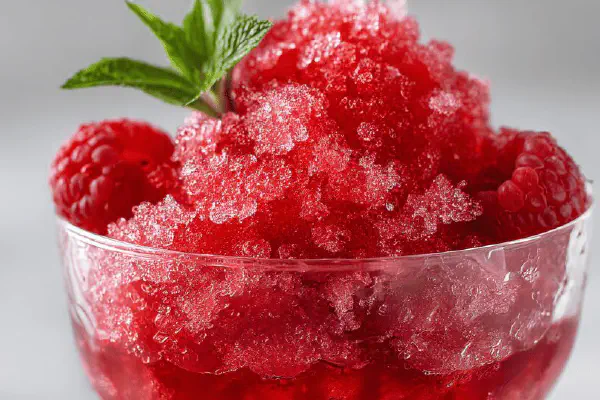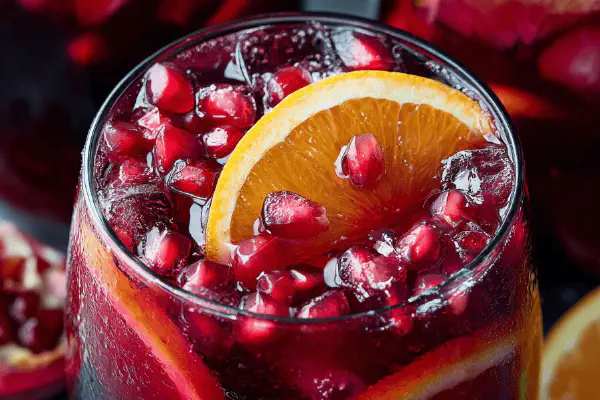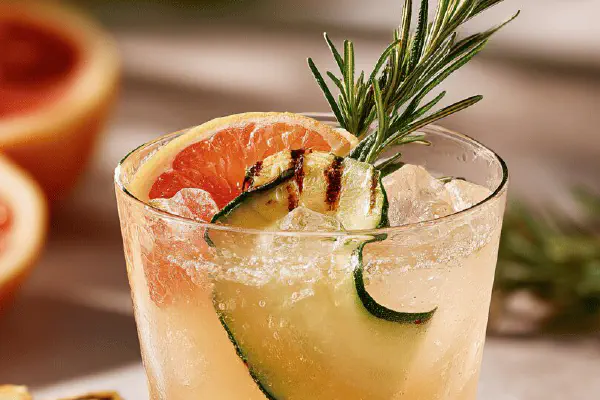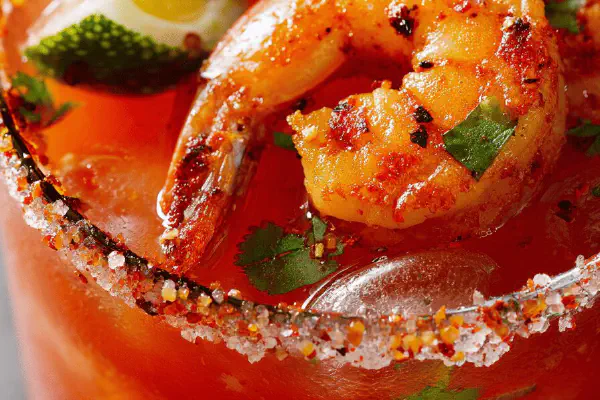Red Wine Sangria Twist
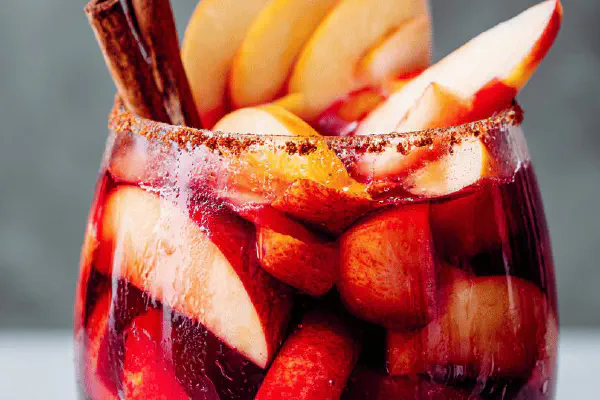
By Emma
Certified Culinary Professional
Ingredients
- 480 ml (2 cups) fresh orange juice
- 1 medium orange sliced thin
- lemon juice from 1 lemon
- 100 g (7 tbsp) granulated sugar
- 60 ml (1/4 cup) brandy
- 1 bottle (750 ml) dry red wine
- 1 ripe peach pitted and sliced thin, plus extra for garnish
- 1 green apple unpeeled, cored, sliced thin, plus extra for garnish
- 2 cinnamon sticks
- Ice cubes
About the ingredients
Method
- Bring orange juice, orange slices, lemon juice, sugar, and brandy to a gentle simmer in a saucepan. Watch closely for a few bubbles—don't let it boil hard; soft simmer releases aromatic oils from peel and dissolves sugar into sticky syrup. About 3 to 4 minutes max. Remove from heat; cool slightly—not cold. Quick tip: residual heat helps the fruit soak better.
- Pour this warm syrup into a large pitcher. Add sliced peach, apple, cinnamon sticks, and the entire bottle of wine. Stir lightly, don’t mash fruit—keeps texture intact. Cover tightly and let rest overnight in fridge. This long maceration softens fruit, deepens spiced aroma. Spoons of sugar or extra citrus can be adjusted next day if too tart or mild.
- Before serving, decide: Strain if you want a cleaner pour avoiding floating bits, or serve rustic, dumping all in glass. Add plenty of fresh ice, extra peach and apple slices for color and texture. The first sip hits with bright citrus; the mid-palate shows peach sweetness and cinnamon warmth. Mouthfeel smooth yet lively. If wine tastes flat next day, a splash of soda water wakes it back to life.
- Voila. Simple, layered, and endlessly modifiable. Swap apples for pears, toss in berries mid-maceration, or swap lemon for lime juice to freshen. Cognac swapped to brandy here—mellower base but still strong backbone. Sugar cut slightly since orange juice has natural sugars; adjust sweetness as preferences dictate.
- Common trap: Overboiling syrup burns citrus oils—bitter and unpleasant. Use low heat. And don’t forget the cinnamon sticks—they anchor the spice but should never overpower. Remove if too strong after tasting. Same with fruit—over-soggy slices for maceration are best eaten out separately or tossed into granola.
- Serve chilled with straws or spoons. Fun to prep ahead. Makes you think about the balance in sangria—fruit, citrus, booze, sweetness, spice—all marrying through slow melding. Not rushed, patience here builds character and depth. A sangria that’s lived, not slapped together.
Cooking tips
Chef's notes
- 💡 Gentle simmer best. Watch for tiny bubbles at edges. Avoid rolling boil. Citrus oils smell sharp at simmer start then mellow. Timing around three to four minutes max. Stir often. Avoid scorch on pan bottom. Hot syrup helps fruit soak flavors better overnight. Cool but not cold before adding fruit and wine. Warmth extracts, cold kills infusion speed.
- 💡 Use fresh orange juice, not concentrate. Zest from thinly sliced peel biggest aroma hit. Pith too thick = bitterness warning. Brandy replaces cognac here for softer hit. Sugar needs adjusting—orange juice naturally sweet. Taste before chilling overnight. Add more next day if tart or bland. I cut sugar from trial to trial; less works better with fresh fruits.
- 💡 Slice fruit thin for fast marinade but firm to avoid mush later. Peach and apple variety flexible; tart green apple or sweeter pears change sweetness needs. Cinnamon sticks strong players—use fresh if possible. Dry sticks overpower fast in long soak. Remove early if sharp bite noticed. Balance cinnamon carefully; too much kills mid-palate softness.
- 💡 Strain is optional. If rough chunks bother, strain through fine mesh. Rustic style is chunkier, messier but aromatic. Pour gently to keep texture or go cleaned-up. Ice added last should never dilute early syrup infusion—add sparingly to each glass. If sangria tastes flat next day, splash soda water for bounce. Carbonation wakes flavors without diluting too much.
- 💡 Overboiling syrup ruins flavor fast; bitter citrus oils and burnt sugar taste nastier than bland. Keep low heat, watch closely. Take saucepan off heat quickly once syrup formed. Cool partially before fruit bath. Overnight soak needs at least 8 hours, better 12+. Patience unlocks layers. Fridge steeping best, slows breakdown but allows melding. Quick chill kills depth.
Common questions
Can I use other fruits?
Absolutely. Pears swap great for apples if adjust sugar up or down. Berries can go in mid-soak but add late to avoid crush and bitterness. Citrus variations work too—lime for lemon adds sharp zing. Just tweak sugar and steep times.
What if syrup boils too hard?
Burnt flavor happens fast. Solution is quick discard or remake for clean base. Don't rush simmer step. Stir often. Low heat only. Burnt bitterness kills sangria brightness. Could rescue by adding fresh juice but better to restart for balance.
Should I strain before serving?
Depends on texture preference. Pouring chunky fruit in glass is rustic, more aromatic. Straining makes cleaner look, smoother sip. Do strain if chunks annoy or for party neatness. Keep cinnamon sticks out unless you like surprises in texture.
How long can sangria keep?
Stored airtight in fridge, it lasts up to 3 days safe. Flavors evolve but fruit gets soggy fast. Remove fruit chunks day two for less mush. Best cold, fresh ice last minute so juice not diluted. Avoid freezer, it kills texture and mutes aromas.
